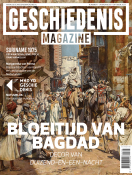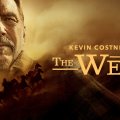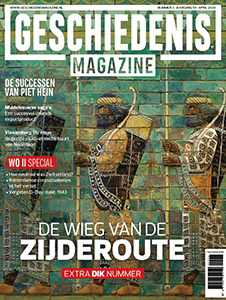
Re-enactment and imagination in the historical film (Introduction)
 Convinced that her tour of Hiroshima has provided her with a full and meaningful experience of the past, the protagonist of Alain Resnais’s Hiroshima, Mon Amour (1959) protests, over and over again, that she has seen Hiroshima, that she has grasped the horror of the atomic bombing of the city, that the suffering of the past has been imprinted on her own subjectivity. ‘You have seen nothing in Hiroshima’, her Japanese lover tells her, ‘Nothing’. The camera begins tracking through the Hiroshima Museum, detailing the grim artifacts; the
Convinced that her tour of Hiroshima has provided her with a full and meaningful experience of the past, the protagonist of Alain Resnais’s Hiroshima, Mon Amour (1959) protests, over and over again, that she has seen Hiroshima, that she has grasped the horror of the atomic bombing of the city, that the suffering of the past has been imprinted on her own subjectivity. ‘You have seen nothing in Hiroshima’, her Japanese lover tells her, ‘Nothing’. The camera begins tracking through the Hiroshima Museum, detailing the grim artifacts; the
Auteur: Robert Burgoyne
hair, the skin, the melted metal and burned stones. Describing these exhibits as acts of witnessing, the woman insists, ‘I have seen Hiroshima. I saw’. ‘You have seen nothing’, the man repeats, ‘Nothing’. The camera itself seems to protest, to add its voice to the woman’s as it samples the filmed re-enactments, the documentary footage, the photographs of charred and maimed bodies, and the images of ground zero. Again she proclaims, with utter conviction that her second-hand experience counts, that the re-enactments matter, that she can now comprehend the past. ‘No’, he replies, ‘you saw nothing in Hiroshima’.
Such is the experience of the spectator of historical films. On the one hand, the act of ‘witnessing again’ in film seems to lay a solid claim on the past itself. Describing the experience of watching wide-screen historical films, Roland Barthes writes that it is like standing ‘on the balcony of History’: ‘Imagine yourself in front of The Battleship Potemkin,’ he writes, ‘supported by the same air, the same stone, the same crowd: this ideal Potemkin, where you could finally join hands with the insurgents, share the same light, and experience the tragic Odessa Steps in their fullest force, this is what is now possible.’[1] On the other hand, the historical film also arouses the critical consciousness of the spectator, the voice that says ‘You have seen nothing’. The re-enactment of the past in cinema seems to call forth an especially powerful impulse to scrutinize the film for its fictional devices, to notice its anachronisms, and to hold the cinematic rendering of history to an exacting standard. Adopting this perspective, the spectator rejects the claim that film can illuminate the past, as if to defend the historical past against tourists and interlopers.
The question of whether we can know the historical past through film or are limited to a mere impression of pastness suggested by the medium itself is at the core of my own approach to historical films. This is a question that Resnais has articulated with precision in films such as Night and Fog (1955), Muriel (1963), and Hiroshima, Mon Amour. One of the most acute theoretical formulations of this question, in my view, is provided by Paul Ricouer in his treatment of the question of re-enactment: ‘re-enacting does not consist in re-living but in rethinking, and rethinking already contains the critical moment that forces us to take the detour by way of the historical imagination.’[2] Rather than a simple re-experiencing of the past, the filmmaker and the spectator alike project themselves into a past world in order to re-imagine it, to perform in it, and to rethink it.
We can move beyond the frame of the individual filmmaker and the individual spectator here. The historical film deals with the shaping discourses of nations and societies, the collective stories that Jacques Rancière calls ‘the dominant fiction’. In some cases, the films of the past provide the fundamental building blocks of the dominant fiction; Rancière describes Hollywood Westerns, for example, as the ‘legend of the formation of the code’.[3] In other cases, historical films can challenge the consensual understanding of the past; Oliver Stone’s JFK (1991), for a very different example, is explicitly designed as a counter-myth to the consensual fiction created by the Warren Commission Report and the mass media of the day. Thus the activity of re-enactment – discovering a route into the past in order to rethink it – can produce both conventional and radical results: on the one hand, mass entertainment and edification by way of the great myth-making machine of modern life; on the other, a critical demystification of the stories that organize the cultural memory of the past. Hiroshima, Mon Amour can again provide an illustration. The opening dialogue might be rewritten, prosaically (and somewhat brutally), in the following way: ‘I have seen Hiroshima’, and the response; ‘You have seen nothing but the marketing of Hiroshima for tourists such as yourself’.
Many historical films do not fall neatly into either of these categories. In most cases, the historical lessons they can teach us need to be pried loose from the surface message. Martin Scorsese’s Gangs of New York (2002), for example, ostensibly depicts the formation of America from the urban vortex of New York – a powerful argument in its own right, given the prevalence of the myth of the frontier and the wilderness in American culture. Its DVD tag-line reads: ‘America was born in the streets’. But beneath this manifest text lies a much more radical concept of the birth of the nation. The ‘gangs’ of the film’s title are ethnic cadres that each boast a vivid mythology, filled with legendary figures and heroic deeds, memorialized in sacred places. In the film’s depiction, the gangs serve as a powerful source of cultural identity and economic opportunity in the mid-nineteenth century. The fledgling United States, by contrast, is portrayed as a feeble and passive institution, without a ‘golden age’, legendary heroes, or a galvanizing mythology of its own. During the climactic battle at the end, the film depicts the military occupation and naval bombardment of New York City during the draft riots as a naked aggression by the nation-state, a seizing of power, territory, and authority away from the ethnic communities that dominated the city. The film communicates this message through parallel editing, Soviet-style montage, non-diegetic music, and mise-en-scène. The text demands that we look at the past with new eyes, in order to grasp a point in historical time when the nation-state was not pre-eminent, and when other, cosmopolitan modes of social organization were beginning to emerge.
Why this reading of the nation-state should appear on the immediate cusp of 9/11 is another question, one that I have tried to answer elsewhere. One of the intellectual challenges in writing about the historical film is the fact that three temporal frames must be considered: the reference period, the historical context at the time of the film’s production, and the present moment of critical reading. The historical film opens a dialogue between past and present; our role, as spectators and critics, is to make the signals from the past and the present audible and distinct.
Each of the essays gathered in this issue of Leidschrift illuminates a particular facet of film’s engagement with history, and each takes up at least one of the theoretical issues that continue to arouse critical interest. The range of perspectives set forth in this issue makes the discovery of a unifying point of view – something I imagine an introduction should attempt – a very distant objective. I propose instead to make a few observations concerning each of the essays included here, in order to highlight the type of historical problem that the authors explore.
Taken together, the essays provide a good sense of the critical cross-pollination that occurs in the analysis of historical films. Situated as they are in the public sphere, historical films do not exist in a vacuum. They bring scholars, commentators, critics, editorialists, bloggers, other filmmakers, and the general public into a wide ranging and in some cases long-continuing discussion of consequential issues. Despite a certain paucity of serious scholarly work on the subject, there is a deeply engaged intellectual exchange that follows in the wake of ambitious historical films. This gives the work a long life, well beyond that of most popular cultural expressions. Moreover, this intellectual and affective exchange actually works against the widespread anxiety that historical films have too much persuasive power. For all the concern that a specific version of history communicated by a particular film will stand as the definitive interpretation of that event or period, the force field emitted by film is both amplified and held in check by the public engagement that takes place around it.
JFK, for example, created a firestorm of controversy, which led to public forums on the film, editorial page commentaries in leading newspapers, a comprehensive, book-length publication of the reviews and criticism of the film accompanied by an annotated script, documentaries on the assassination of John F. Kennedy, and numerous other films and books. Historical films attract comment, inspire creative activity in other media, trigger a vernacular response that takes unpredictable forms, and in general stimulate cultural awareness and activity – both positive and negative. As the first essay in the volume points out, The Birth of a Nation (D. W. Griffith, 1915) led to a massive increase in the membership of the Ku Klux Klan; but it also led to an increased awareness of the malevolent effects of racial stereotype, gave the civil rights organization NAACP a powerful rallying cry, and initiated a conversation that extends to the present concerning racial and ethnic imagery in film.
Adam Fairclough’s graceful essay leading off this volume brings the film Shenandoah (Andrew McLaglen, 1965) back into the discussion of race and representation in American films. Drawing on his own childhood experience watching the film, he recalls a scene that etched itself in his memory, an experience that he offers, sub rosa, as a kind of model for the spectator’s experience of history in film. Although Shenandoah is a film of historical significance – for it is the first film to depict black Union soldiers fighting as volunteers in order to free their people from slavery – what interested young Fairclough were the battles and the spectacle. The Civil War, a topic of enduring cinematic interest, has generally been wrapped ‘in a romantic haze’, he argues, evidenced by the focus of several recent as well as older films about the great, transformative war of American history. Although Shenandoah, with its progressive racial message, can be seen as the precursor to later, powerful films of historical depth such as Glory (Edward Zwick, 1989) and Amistad (Steven Spielberg, 1997), the vast majority of Civil War films indulge in romantic mythology, portraying the Confederacy as a noble lost cause, the antebellum South as a benign pastoral society where social equilibrium and good manners reigned, and depicting the driving cause of the war to be states’ rights rather than slavery.
Surveying a number of Civil War films, Fairclough remarks that the vernacular culture that grew up around the genre – namely, the tens of thousands of Civil War re-enactors and collectors who obsessively relive the past, making sure to possess the right ammunition and to wear the correct uniforms (including the fabrics, buttons, dyes, and thread count of the shirts they wear), are largely smitten with the Southern side of the war, and seldom drawn to re-enact the battles on the Union side. Race, slavery, and the fundamental cause for which the war was fought seem irrelevant for the purposes of romantic appropriation and repurposing. Several recent Civil War films seem to follow a similar path, with works like Gettysburg (Ronald Maxwell, 1993) and Cold Mountain (Anthony Minghella, 2003) detailing life on the Southern side of the conflict. Moreover, the difficult period following the war – Reconstruction – is seldom treated in films, as it raises issues of race in civic, social, and sexual contexts in ways that cannot be easily accommodated in a mainstream film. The hazy romanticism of Hollywood Civil War movies, Fairclough concludes, tell us much about the audiences of the present and the past, but tell us little about the actual history of the period. Like a screen memory, they offer a reassuring portrayal of nation, a way of moving beyond race without ever having to deal with race. The institution of slavery, the rise of a mass terrorist organization in the South (the Ku Klux Klan) and the panic over miscegenation are ignored in favour of portrayals that all can identify with: Northern whites, Southern whites, blacks, men and women. The Civil War on film offers ennobling portrayals of every type of citizen, providing a good example of what Jacques Rancière calls the ‘dominant fiction’, a narrative or image of nation with which everyone can identify.[4]
The films Fairclough treats are examples of films that, in Rosenstone’s terminology, ‘vision’ history. Works that do not contest or challenge interpretations of the past, but rather provide a familiar and reassuring treatment of an already well worn subject.[5] As such, Gettysburg, Gods and Generals (Ronald Maxwell, 2003), Cold Mountain and Sommersby (Jon Amiel, 1993), the subjects of Fairclough’s concluding paragraphs – may illustrate a generalized perception of the war and its place in American life. They do not, however, provoke analysis and discussion, inspire counter-arguments, or energize the artistic and critical milieu. These are forgettable works, without much to say, and have justifiably mostly been forgotten. The films that engage historians and film theorists interested in history are of another class altogether, and it would be interesting to see what Fairclough could do with Shenandoah, which needs critical reappraisal, Glory, or Amistad. Fairclough draws several useful insights from the general survey he provides of films that ‘vision’ the Civil War, and makes a number of subtle points about the cultural work performed by these mainstream films. I would argue, however, that the more intriguing and ambitious films on this subject, although few in number, need to be considered as well. Their cultural impact has been impressive. Glory, for example, gave rise to a large genealogical project among black citizens of the United States, spawned ballets, other films, and museum exhibitions. It also inspired a number of related books and studies, led to the restoration and re-situating of the Shaw Monument in Boston, and created a widespread public awareness of the role of black soldiers in the Civil War as well as the racism in the Union military. Not content to merely ‘vision’ the past, Glory is an example of a film that ‘contests’ the past, providing a view of the Civil War from a new perspective.
Santiago Juan-Navarro takes on a challenging group of films made under the Castro regime in support of an overtly propagandistic program – to link the Cuban Revolution of 1959 with the hundred year struggle against colonialism and dictatorship that has characterized much of Cuban history. Although explicitly guided by nationalist-mythological aims, the films Juan-Navarro treats are strikingly innovative and highly original works that employ a range of period styles, avant-garde techniques, allegory, and complex narrative designs to articulate a new way of seeing history. Lucía (Humberto Solás, 1968), a justifiably famous film forty years after it was made, tells the story of three women from three different historical periods, all named Lucía, and all involved either tangentially or directly in political events of their era. Each of the three stories culminates in a dramatic revelation of the intersection of the political and the personal. Each is shot in a style redolent of the period conventions of the era in which they are set.
Another film, Le primera carga al machete [The first machete charge] (Manuel Octavio Gómez, 1969), Navarro calls the ‘most representative product of this cycle of films’. Depicting a historical event that took place in 1868, it makes the past contemporary with the present, using a hand-held documentary technique, conducting interviews with the participants, stylizing the final battle scene so that it looks both frenzied and mythological, over exposing the film so that it resembles a daguerreotype, and then propelling the viewer back to the present of 1969. The revolution of the past is visualized as continuous with the revolution of the present. A revolutionary cinema, the director says, ‘places history within a contemporary context, highlighting it as something alive, in all its force and continuity’.[6]
A third film treated by Juan-Navarro seems equally innovative; Páginas del diario de José Martí [Pages of José Martí’s diary] (José Massip, 1971) appears from his description to be a genuinely avant-garde text, a work that combines multiple genres, creates a pastiche of music, literary texts, voice-over, documentary, and overtly allegorical modes, and emphatically links the events of 1868 with the struggles against dictatorship in various decades in order to show that the revolution begun in 1868 is still ongoing. Narrating the story of Cuba over the hundred years since the first revolutionary uprising, Páginas combines documentary images with fiction sequences drawn from the diary of José Martí. Quoting verbatim texts by Castro and by Martí, the film intentionally mixes up the source of the quotations, a ventriloquism aided by the voice-over narrations of two women who ‘switch’ roles. Several embedded stories are filmed in different styles, some events are illustrated by way of contemporary ballet dances, José Martí is pictured in a studio talking with contemporary avant-garde artists. Overall, Páginas appears to be a dazzling experiment in visual language, under girded by a revolutionary, albeit propagandistic program. Sadly, the film has been largely forgotten; screened only a very few times, it has passed into cultural oblivion. The Cuban First National Congress on Education and Culture (1971) loathed experimental works, according to Juan-Navarro, and deemed films like Páginas not popular enough. The work was unable to be screened in the repressive cultural environment that took hold in the 1970’s.
Juan-Navarro’s detailed consideration of style in the works he treats powerfully underscores the connection between formal innovation and the attempt to renovate historical perception. In Rosenstone’s terminology, these works ‘revision’ the past, offering a new interpretation, a new language, and a new conception of how the past is important to the present.[7] The films made during this brief flowering of Cuban revolutionary cinema are animated by a desire to make history count. That they have an explicitly propagandistic aim seems to me to be secondary to the de-familiarizing impact they produce. One sees history – and the potential of historical ‘writing’ in film – with fresh eyes here. Similarly, the films of Sergei Eisenstein and Dziga Vertov were also made under explicitly political programs, yet each of these filmmakers has enjoyed a lasting currency, an influence and importance in the contemporary world for their innovative, formally ambitious analyses of history and society.
The relation between style and message is paramount here, as the arguments the films set forth require the use of pastiche, hybrid forms, complex temporal designs and explicit parallelism. Nevertheless, these films – the ones that ‘revision’ history – remain rare in the Western canon, even among ambitious directors of historical film such as Oliver Stone, Martin Scorsese, Steven Spielberg, and Bernardo Bertolucci. Dependent on the box office, the formal experimentation that distinguishes the Cuban films of the period 1968-1971 is seldom found, although certain striking exceptions should be noted; works such as JFK, The Conformist (Bernardo Bertolucci, 1970), Reds (Warren Beatty, 1981), and to some extent Gangs of New York.
In-between conventional historical films that ‘vision’ history and the radical experiments in form that ‘revision history’ is a third category, those that ‘contest history’.[8] In these films, formal experimentation is not as prominent, but they nevertheless offer a perspective that changes the meaning of the past. Films that contest history challenge the existing historical interpretation of events and view history from a new angle. Examples that come to mind from the tradition I am most familiar with are works such as Clint Eastwood’s Flags of Our Fathers (2006) and Letters From Iwo Jima (2006), or Terence Malick’s The New World (2005), or the powerful rendering of an early Jesuit missionary’s experience in seventeenth century Canada, Black Robe (Bruce Beresford, 1991). These are films that take a familiar historical narrative and render it from a new perspective, in the process, contesting the conventional understanding of these events.
I have read only the abstracts of the essays written in Dutch, and I can comment only briefly on these pieces. The abstracts of these essays that I have read suggest a range of approaches, methods, and interests. Starting with the essay by Frits Naerebout, I will make a few speculative remarks about each essay’s approach, and try to link it with other works of scholarship on the historical film.
The title of the essay by Naerebout, ‘This film is not meant to make any sort of political statement’ strikes me as ironic, as the author immediately sketches a political reading of the ‘antiquity-film’, or what in English language criticism would usually simply be called the ‘epic’. His primary theme is that the antiquity-film can be read as an allegory of the present, that it is used to make a statement about the present that could not be made directly; the antiquity-film can thus be said to be engaged in a kind of covert politics that may be intended by the filmmakers or simply interpreted as such by critics and audiences.
If my sense of the work is correct, Naerebout’s essay calls to mind a tradition of analysis of historical films that is sometimes called the ‘presentist’ position. In this approach, films about the past can only be about the present circumstances of the film’s production; what they cannot do is illuminate the past itself with any degree of accuracy or insight. Shaped by the present circumstances contemporaneous with the film’s production, films set in the past provide a very good lens through which to view the period of the film’s making, but they offer very little in the way of analysis or knowledge about the reference period. Several outstanding books have been written from this perspective, including Maria Wyke’s Projecting the past and Pierre Sorlin’s The film in history.[9] The value of the antiquity-film, from this perspective, is that the present context appears in a slightly disguised form, so that ideas and arguments that cannot be said directly can be stated here indirectly. Moreover, audiences may perceive present-day issues in a new light when they are cloaked in antique form.
A competing view, however, animates the important work of Natalie Zemon-Davis, who argues that films should ‘let the past be the past’, that they are most valuable when they respect the ‘otherness’ of the past.[10] While the goal of capturing the moral beliefs, the politics, the behavioural codes, and the style of life of the past may be impossible to achieve, filmmakers, she argues, can best render history by offering a ‘thought experiment’ about the past. Her analyses of historical films celebrate works that distil the strangeness and difference of the past, and that do not project the present onto earlier periods. These positions are powerfully argued in her treatment of The Return of Martin Guerre (Daniel Vigne, 1982), a film for which she was historical advisor, and in her recent book, Slaves on screen.
‘Romans go home!’ by Reinier Wels takes an appealingly light approach to the often weighty subject of the historical film. He considers comic films set in antiquity that frequently take the Romans and their colonized subjects as humorous, almost slapstick creations. Comic takes on epic cinema appear to be thriving subgenre, as the recent success of a film based on the epic 300 (Zack Snyder, 2007), Meet the Spartans (Jason Friedberg and Aaron Seltzer, 2008), would indicate. Wels adds a dimension by positing a kind of mock European identity emerging from the humorous treatment of European ancestors, which strikes me at first look as a kind of carnivalesque approach. The work of Robert Stam on Brazilian cinema comes to mind, as Brazilian films such as Macunaíma (Joaquim Pedro de Andrade, 1969) take a similarly comic approach to the subject of colonialism, overturning the hierarchies of Brazilian society as well as the pieties of historical filmmaking at the same time.[11]
The essay entitled ‘Over de eigenheid van de Nederlandse filmcultuur’ [On the peculiarity of Dutch cinema culture] by Judith Thissen, André van der Velden and Thunnis van Oort takes an ‘audience studies’ approach to try to assess the reasons for the absence of a thriving Dutch cinema culture. The authors conclude that the religious orientation of certain sub-sectors of Dutch society affects the degree of interest and enthusiasm for the cinema. This strikes me as a fine-grained, sociological approach, one that has mostly been employed in the United States in studies of the audience in urban settings, especially focusing on minority populations and women, whose participation in the public sphere was otherwise quite limited.
‘The past may inhabit us, but we do not inhabit it’ by Marianne Eekhout provocatively links museums and films in a way that I find quite promising. Arguing that historical films seek to approach the ‘authenticity’ of museum exhibitions and holdings, with their careful documentation and sophisticated stylistic and contextual analyses, Eekhout makes a bold jump by highlighting the increasingly cinematic nature of museum-going experiences. Keen to increase the affective impact of their exhibitions, museums have embraced multi-media presentations, experiential exhibitions, and film screenings themselves as part of the museum experience. The two cultural institutions, cinemas and museums, have become intertwined in their interest and focus on re-enacting the past. This strikes me as an original approach, and one that I find particularly congenial. It intersects in interesting ways with the book Prosthetic memory by Alison Landsberg, in which she discusses the mass circulation of ‘memories’ of the past: images and impressions that are experienced as if they were memories, but that are circulated publicly through the media and through museums. The power of cinema and experiential museums, such as the Holocaust Museum in Washington, D.C., to burn experiences in, to make us live the experiences as if they were memories, makes both cinema and museums effective as technologies of memory.[12]
‘De nieuwe kaskrakers: de historische film in het hedendaagse Polen’ [The new blockbusters: historical film in contemporary Poland] by Idesbald Goddeeris and Katrin van Cant argues that Polish cinema, since the collapse of the Soviet Union, has actively engaged in a form of nation-building through film. Looking at the past through a highly partisan lens, these films are less interested in a well-rounded, critical analysis of the past than they are in creating a mythology for national identification, a new narrative of nation that will resurrect the genre memory of epic stories of the past while making these memories available for new uses in the present. Rather than historical films, these works appear to already have the quality of myths. Recent work in the United States and Britain on the link between national identity and narrative form strikes me as a possible connection here. I am especially reminded of the powerful work conducted by Anthony D. Smith on the ethnic sources of national identity. His treatment of various national movements stresses the fact that ethnic imagery, legends and narratives constitute the core material of national identification.[13]
The scholarly work collected here provides an unusually diverse sample of ongoing work in the field. The essays all come from somewhat different disciplinary orientations, a diversity that underlines the vitality of the subject we consider here. By analyzing films of history, we are led to discover new and surprising aspects of the past. Just as important, we are led to discover scholarly work – and sometimes entire scholarly disciplines – that we would not have encountered otherwise. This was my experience reading these essays, and I hope to have communicated in these pages some of the pleasure I took in reading these works and in learning something new.
| Titel: | Introduction: re-enactment and imagination in the historical film |
| Nummer: | Verleden in beeld. Geschiedenis en mythe in film |
| Jaargang: | 24.3 |
Bestel het gehele nummer op onze website:
Noten:
[1] R. Barthes, ‘On CinemaScope’, Jouvert. A Journal of Postcolonial Studies 3.3 (1999), accessed at http://english.chass.ncsu.edu/jouvert. Originally published in Les letters nouvelles (February 1954).
[2] P. Ricouer, The reality of the historical past (Milwaukee 1984) 8.
[3] J. Rancière, ‘Interview: The image of brotherhood’, trans. Kari Hanet, Edinburgh ’77 Magazine 2 (1977) 26-31.
[4] Rancière, ‘Interview’, 26-31.
[5] R. Rosenstone, History on film / Film on history (Harlow, MD 2006); R. Rosenstone, ‘Introduction’ in: R. Rosenstone, Revisioning history: Film and the construction of a new past (Princeton 1995) 3-13.
[6] M. Octavio Gómez, quoted in S. Juan-Navarro, ‘The absolution of his(s)tory: the mythologization of the past in Cuban cinema (1968-1971)’, Leidschrift 24.3 (2009) 33-50: 39.
[7] R. Rosenstone, ‘Oliver Stone as historian’ in: R. B. Toplin ed., Oliver Stone’s USA: film, history, and controversy (Lawrence, KS 2000) 26-39.
[8] Rosenstone, ‘Oliver Stone’, 26-29.
[9] M. Wyke, Projecting the past: ancient Rome, cinema, and history (London 1997) en P. Sorlin, The film in history: restaging the past (Totowa, NJ 1980).
[10] N. Zemon-Davis, Slaves on screen: Film and historical vision (Cambridge 2000).
[11] R. Stam, Tropical multiculturalism (Raleigh, NC 2003).
[12] A. Landsberg, Prosthetic memory: the transformation of American remembrance on the age of mass culture (New York 2004).
[13] A. D. Smith, Myths and memories of the nation (Oxford 1999); A. D. Smith, The nation in history: historiographic debates about history and nationalism (Hanover 2000).







